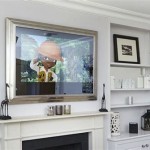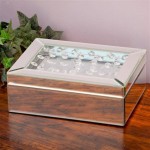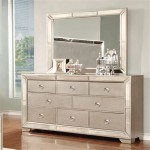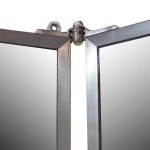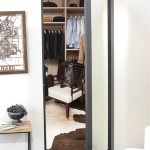How To Make A Large Wall Mirror
Creating a large wall mirror can significantly enhance a room's sense of space and light. While purchasing one can be expensive, building a custom mirror offers an affordable alternative and allows for complete control over size and design. This process requires careful planning and execution, but the results can be highly rewarding.
The initial step involves gathering necessary materials. These include mirror glass, which can be ordered from local glass suppliers or online retailers specializing in custom cuts. The thickness of the mirror glass will depend on the overall size of the mirror; larger mirrors require thicker glass for stability. Wood for framing is another essential component, with options ranging from basic pine to more decorative hardwoods. The wood should be sturdy enough to support the weight of the glass. Other materials include adhesive specifically designed for mirrors, wood glue, measuring tape, a level, safety glasses, gloves, and appropriate fasteners like screws or nails.
Accurate measurements are crucial for a successful outcome. Carefully determine the desired dimensions of the finished mirror and factor in the width of the chosen frame material. It's recommended to create a paper template of the mirror's dimensions to visualize the final size and placement on the wall. This step helps ensure that the mirror fits the intended space and aligns with other design elements.
Building the frame is the next stage. Cut the chosen wood to the calculated dimensions, ensuring precise 45-degree angles at the corners for a clean, professional look. A miter saw provides the most accurate cuts for this purpose. Dry-fit the frame pieces together before applying wood glue to ensure a tight fit. Once the glue is applied, clamp the frame together and allow it to dry completely according to the glue manufacturer's instructions.
After the frame is dry, reinforcing the corners adds further stability, particularly for larger mirrors. Small metal brackets, available at most hardware stores, can be affixed to the inside corners using screws. This extra support helps prevent the frame from warping or flexing over time due to the weight of the glass.
Preparing the backing for the mirror is an essential step. A sturdy backing board, such as plywood cut to the exact dimensions of the frame's interior, provides a secure surface for mounting the mirror. This backing should be attached to the frame using screws or nails, ensuring it sits flush with the back edge of the frame. The backing board adds structural integrity and helps distribute the weight of the mirror evenly.
Applying mirror adhesive requires careful attention. Follow the adhesive manufacturer's instructions precisely, as different adhesives require different application methods. Generally, the adhesive is applied to the backing board in evenly spaced lines or dots. The mirror glass is then carefully placed onto the adhesive, ensuring it is centered within the frame. Gentle pressure should be applied evenly across the mirror's surface to ensure proper adhesion.
Securing the mirror within the frame can be achieved using mirror clips. These clips are designed to grip the edges of the mirror and attach to the frame, providing additional support and preventing shifting. The clips should be spaced evenly around the perimeter of the mirror and securely fastened to the frame using appropriate screws.
Finishing the frame adds a polished look to the completed mirror. Sanding any rough edges creates a smooth surface for painting or staining. Choose a paint or stain that complements the surrounding decor. Multiple coats may be required for optimal coverage and durability. Allow adequate drying time between coats, and consider applying a sealant for added protection.
Mounting the mirror on the wall requires appropriate hardware. The type of hardware depends on the weight of the mirror and the wall material. Heavy-duty picture hangers, D-rings, or French cleats are common options. Ensure the chosen hardware is rated to support the weight of the mirror. Use a level to ensure the mirror hangs straight once installed. Depending on the size and weight, it might be beneficial to have assistance during the mounting process.
Safety precautions are paramount throughout the entire process. Always wear safety glasses when cutting glass or wood. Gloves should be worn when handling the mirror glass to protect against sharp edges. Proper ventilation is essential when working with adhesives, paints, or stains. Following these steps and taking appropriate safety measures will help in creating a beautiful and functional large wall mirror. Remember to consult local building codes and regulations regarding mirror installations, especially for very large or heavy mirrors.

Diy Large Paneled Wall Mirror Shanty 2 Chic

How To Add A Wood Frame Large Wall Mirror For Under 20 Dream Design Diy

How To Make A Large Arched Mirror Jenna Sue Design
:max_bytes(150000):strip_icc()/kaylasimonehome-905941da7dd04a08af07c415df2a1fd8.jpeg?strip=all)
20 Diy Mirror Frame Ideas To Inspire Your Next Project

How To Frame A Mirror

Diy Frame A Large Wall Mirror With Molding By Design The Inspired Room

How To Add A Wood Frame Large Wall Mirror For Under 20 Dream Design Diy

Diy Large Grid Mirror Pine And Poplar

Diy Large Paneled Wall Mirror Shanty 2 Chic

Diy Rustic Mirror Houseful Of Handmade

